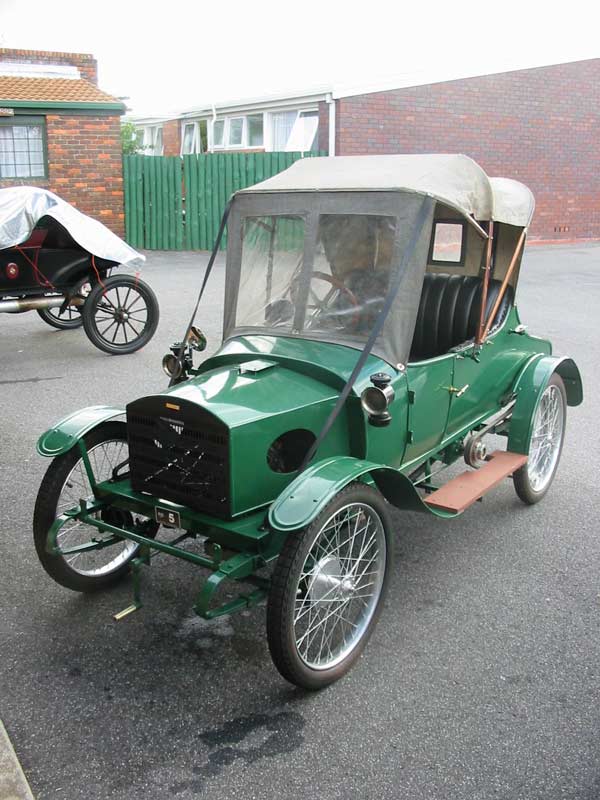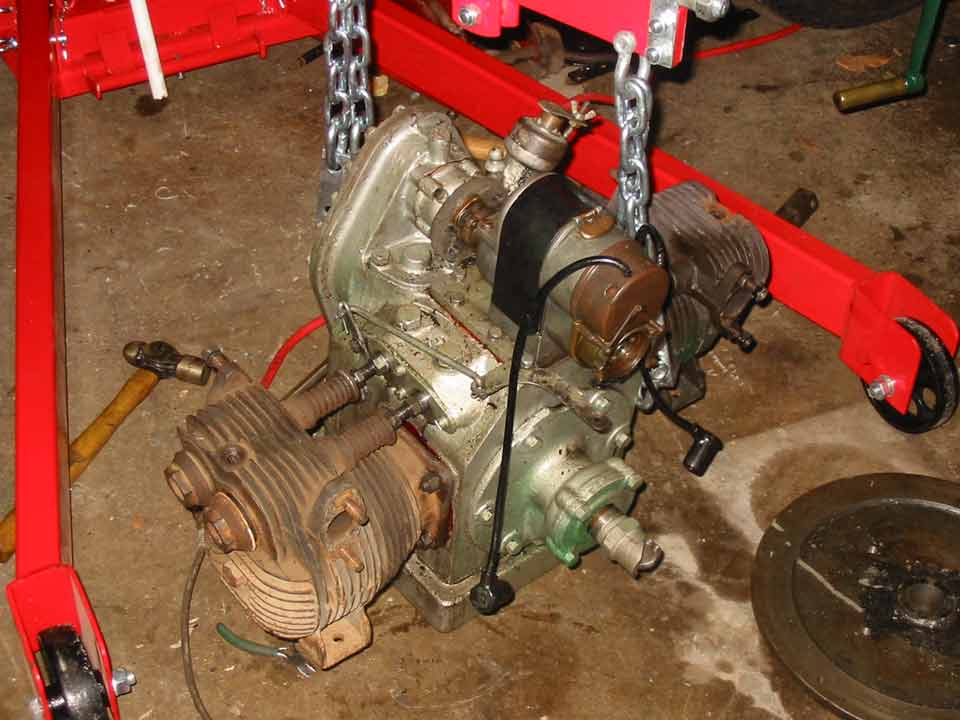The Section Car Pages
SAR "S" class - The Motor
Revealed.
 Bill Sides - an automotive enthusiast in Victoria,
has advised of some of his experiences on the motor fitted
into the SAR S class.
Bill Sides - an automotive enthusiast in Victoria,
has advised of some of his experiences on the motor fitted
into the SAR S class.
He advises that he has a old motor car, an Austral cycle car, that has been
fitted with a Macque twin cylinder motor, which by all accounts is
identical to the motor fitted in the SAR S Class. The Macque was made in Melbourne by MacQueen (who were based in Clarendon Street South Melbourne).
He notes, from his experience, that the motor is not that great a
performer. It fires up and runs ok, but is prone to loosing power
when it gets hot. This is similar to information available to me
regards the S class running, It too tends to loose power as things
warm up.
Part of this may be related to the design of the motor, which is
all cast iron, with the motor being supported on the heads. It may be
that the mounting encourages uneven cooling around the head, throwing
the cylinder slightly out of round, and thus suffering a loss
of compression.
It may also be that the head simply overheats, as the intake ports
are already cool, and located at the front of the motor leaving the
hot exhuast ports to remain warmer with poorer air flow. Hot spark plugs also tend to loose their efficiency.
Bill advises that the Macque motor was made in large
numbers and supplied to who-ever wanted them. The original design
came from Coventry Victor in the UK, who still supply parts for them
(albeit later versions). See their website to note the similairities.
The main difference is the mounting - the ones on CV's website are
sump, not barrell, mounted.
Quoting Bill: 
"Macque had a history of making flat twin engines for cycle cars as far back as 1913, that is a well documented and they later specialized in rail trolleys. This engine is clearly more modern than 1913 and too heavy for a cycle car.
It is a 1920’s design originating with Coventry Victor of the UK and has pressure fed bearings, full circle crank and the manufacture date is confirmed by the Lucas magneto dates on both the engines I have which indicate 1924/5 manufacture. The magneto is a common Lucas GA4 but with a single cam on the contact breaker and a 4 cylinder distributor. There is a fibre flexible coupling to the timing case with allowance for minor timing adjustment. Only two of the four distributor outlets are wired to the spark plugs but this works because of its single lobe cam, it fires the two cylinders appropriately.
Carburettor type is unknown but I have fitted an industrial Holley very similar to that on T Fords fitted, it seems OK and bolted straight on and is possibly correct, alternately a Schebler was a common carby at the time and some models would fit.
Timing gears are beautifully made fine tooth helical gears with a 2:1 step down to drive the camshaft then a 2:1 step up on a separate pair of gears to drive the magneto. A large cast sump is fitted. The camshaft is huge and mounted above the crank just below the magneto. Cam follers are solid and sealed by thin felt so leak oil badly.
A number of other similarities also exist. The clutching system in the cycle car is an inverted cone shaped unit, sounding almost identical to that used in the S and SD series cars (see pic on the "S Class Page"). The motor in his car is apparently from a Sheffield section car that was used by the Emu Bay Railway in Tasmania. Its engine number relates closely to another motor that he has. Bill also notes he has seen a very similar engine in a Sheffield section car that is located at Swan Hill, Victoria.
Thanks Bill for your input.
But then - see also the TGR WG pages as there is a pic of a "Buda" motor there. it may well have been a Buda intially!
The S Class page | Section Car
Page
Revised August 12, 2007
 Bill Sides - an automotive enthusiast in Victoria,
has advised of some of his experiences on the motor fitted
into the SAR S class.
Bill Sides - an automotive enthusiast in Victoria,
has advised of some of his experiences on the motor fitted
into the SAR S class.